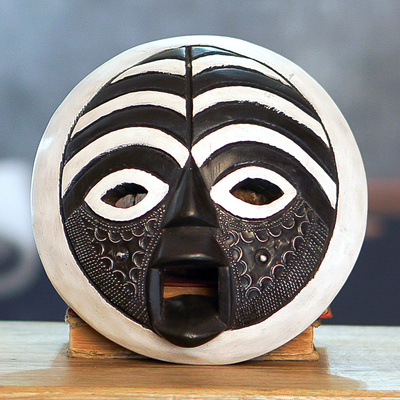Black African wood is a type of timber native to Africa. It is known for its durability and unique aesthetic qualities.
Black African Wood is a highly sought-after timber known for its exceptional durability and distinctive appearance. With its rich color and beautiful grain patterns, this wood is prized for various applications, including furniture, flooring, and architectural detailing. Its resilience makes it ideal for outdoor use, offering resistance to rot, insects, and decay.
Black African Wood is sourced from various African countries, including Cameroon, Gabon, and Ghana, where it is carefully harvested from responsibly managed forests. Not only does this timber possess striking visual appeal, but it is also favored for its long-lasting performance and versatility. Whether used in interior or exterior settings, Black African Wood adds a touch of natural elegance and timeless beauty to any project.
History Of Black African Wood
Black African Wood, also known as Diospyros ebenum, has a fascinating history that spans centuries. This rare and valuable wood is derived from the ebony tree, which is native to various regions in Africa, including countries like Mozambique, Tanzania, and Madagascar.
Known for its remarkable durability, exquisite grain patterns, and distinct dark color, black African wood has been prized throughout history for its versatility and aesthetic appeal. In this article, we will explore the origin and significance of black African wood, as well as its traditional use in art.
Origin And Significance
The ebony tree, from which black African wood is harvested, has a rich history that can be traced back to ancient times. Revered for its beauty and strength, ebony wood was highly sought after by ancient civilizations, including the Egyptians, Greeks, and Romans. Its significance can be further seen in its presence in various cultural and religious practices.
In many African societies, ebony wood is considered sacred and is used in the creation of ceremonial objects, musical instruments, and even ancestral carvings. The rarity of black African wood, combined with its cultural importance, has elevated its desirability and value.
Traditional Use In Art
Black African Wood has been used by master craftsmen and artists for generations to create stunning works of art. Its deep and rich color, along with its fine grain pattern, make it a popular choice for intricate carvings, sculptures, and furniture. With its strength and durability, ebony wood allows artisans to create intricate and delicate designs that stand the test of time.
This wood is often used to carve intricate figurines, masks, and religious artifacts, showcasing the unique cultural heritage of the African regions where it is found. The resulting art pieces not only exemplify the skill of the artisans but also serve as a testament to the enduring legacy of black African wood.
Characteristics Of Black African Wood
The characteristics of Black African wood make it a popular choice among furniture makers and craftsmen around the world. This hardwood is known for its unique qualities that set it apart from other types of wood. In this section, we will explore two key characteristics of Black African wood: density and durability, as well as grain patterns and colors.
Density And Durability
One of the standout qualities of Black African wood is its impressive density and durability. With a density ranging from 800kg/m³ to 1100kg/m³, this wood is incredibly sturdy and resistant to wear and tear. Its high density makes it less prone to scratching and denting, ensuring that furniture made from Black African wood maintains its pristine appearance for years to come.
Black African wood’s remarkable durability also makes it an excellent choice for outdoor furniture. It can withstand harsh weather conditions, including intense sun exposure and heavy rain, without experiencing significant damage. This durability factor makes it a favorite among outdoor enthusiasts who are looking for furniture that will last.
Grain Patterns And Colors
The grain patterns of Black African wood are truly unique, adding a touch of elegance and sophistication to any piece of furniture it is used for. The interlocking grain pattern creates a stunning and distinctive look that is highly sought after by both designers and consumers alike.
Additionally, Black African wood comes in various striking colors, ranging from dark brown to almost black. These rich and deep colors add depth and character to furniture, making it the focal point of any room. Whether used in a contemporary or traditional setting, Black African wood’s color variations effortlessly enhance the overall aesthetic.
Artisans And Their Craft
Skill And Techniques
Black African wood artisans showcase remarkable skills and outdated techniques.
Cultural Influence
Their craft is deeply rooted in African culture, reflecting traditions and heritage.
Market Demand And Global Reach
The Black African Wood, known for its unique beauty and durable nature, has gained significant market demand and global reach in recent years. This valuable wood species has carved out a niche in the luxury furniture and decor market due to its exquisite appearance and exceptional quality. Export trends demonstrate the expanding demand for Black African Wood across the globe, making it a sought-after material for various high-end applications.
Luxury Status
The exceptional aesthetic appeal and robustness of Black African Wood have elevated its status in the luxury furniture and interior decor segment. Designers and craftsmen value its distinctive grain patterns and rich, dark hues, often using it to create exclusive, high-value furniture pieces. This wood’s unique character and scarcity contribute to its premium status in the luxury market, making it a preferred choice for discerning clientele.
Export Trends
The export trends of Black African Wood reveal a substantial rise in global demand, with growing international market interest from regions such as Europe, North America, and Asia. This wood’s reputation for exceptional strength and beauty has fueled its popularity in the international market, driving increased export volumes from African countries. The sustainable sourcing of Black African Wood further enhances its appeal, aligning with the rising global focus on environmentally friendly and ethically sourced materials.
Preservation Efforts And Sustainability
The preservation and sustainable management of Black African Wood are essential for maintaining ecological balance and ensuring the longevity of this valuable resource. As the demand for this unique wood grows, it becomes increasingly crucial to address the challenges faced in its preservation and promote sustainable practices.
Challenges Faced
The Black African Wood faces challenges due to illegal logging, deforestation, and over-exploitation. The unsustainable harvesting practices have led to a decline in the population of these trees, posing a threat to the biodiversity of the region.
Innovations For Conservation
Several initiatives have been implemented to promote the conservation of Black African Wood. One such innovation is the establishment of protected areas and national parks to safeguard the natural habitat of these trees. Additionally, sustainable harvesting techniques and community-based forestry management programs have been introduced to ensure the long-term preservation of this valuable natural resource.

Credit: www.novica.com

Credit: www.amazon.com
Frequently Asked Questions On Black African Wood
What Is The Black Wood From Africa Called?
The black wood from Africa is called ebony. It is known for its dark color and dense, smooth texture.
How Rare Is African Blackwood?
African Blackwood is highly rare due to its limited supply and slow growth. Its scarcity contributes to its high value and demand in various industries, such as musical instrument making and fine woodworking.
Is African Blackwood Expensive?
Yes, African Blackwood is considered expensive due to its scarcity and high demand. Its exceptional quality makes it a preferred choice for musical instruments and high-end woodworking projects. Its cost is usually higher than other types of wood used for similar purposes.
How Strong Is African Blackwood?
African Blackwood is exceptionally strong and dense, making it ideal for crafting high-quality musical instruments and intricate woodwork.
Conclusion
Incorporating Black African Wood adds unique style and character to any space. Its rich history and sustainable qualities make it a valuable choice for furniture and decor. Consider the beauty and durability of Black African Wood for your next design project.
Make a statement with this timeless and eco-friendly material.


